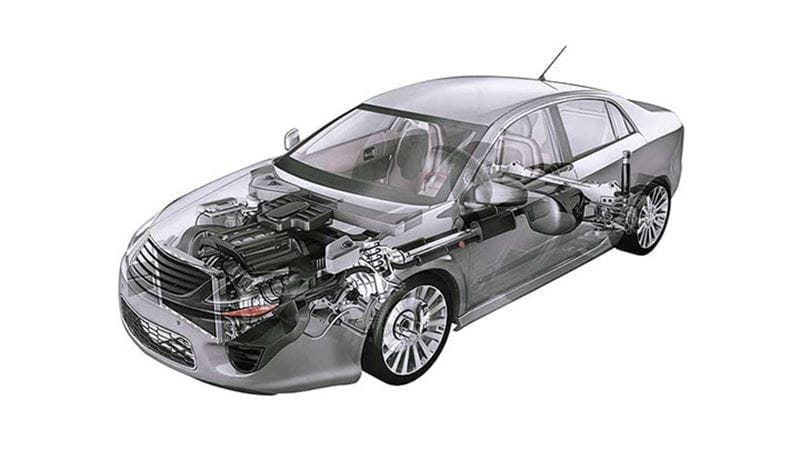Smooth operator

Hit the brakes and a high-pitched squeal can play havoc with the eardrums. As a complement to traditional solutions such as the anti-noise shim or insulator, a key piece of hardware can solve the problem completely: the damped abutment clip, otherwise known as the slipper. Any experienced mechanic will know about the impressive noise-damping effect of this crucial piece of equipment.
Trelleborg Sealing Solutions has come up with a unique solution that can be tailored to any sliding caliper brake system, ensuring its smooth operation – no shake, no rattle, just roll.
Imagine a carefully engineered “layer cake” of stainless steel and rubber holding the brake pad in place. Sandwiched between the brake pad “ear” and contact points in the anchor bracket, the abutment clip dampens the clunk or low-frequency noise by decoupling the pad ear, isolating it from the anchor bracket and preventing in-plane energy from being transmitted to the calipers. It also enables the easy retraction of the pad on the release of brake pressure, reducing the risk of residual drag.
Abutment clips have traditionally been made from uncoated stainless steel, but as car engines have become quieter, there has been a growing demand for noiseless braking systems with rubber-coated clips.
Trelleborg makes clips with a temper-rolled stainless steel core coated with PTFE (polytetrafluoroethylene) and rubber. “Only Trelleborg designs PTFE-coated clips with a range of rubber compounds in varying thicknesses with different surfaces,” says Johan Stjärndahl, Engineered Applications Director, Trelleborg Sealing Solutions. “That makes all the difference and sets us apart from the competition. Our flexible and efficient manufacturing method enables us to tailor our solutions to our customers’ specific needs.”
Flexible, nonstick, nonreactive and heat-resistant, PTFE minimizes friction (reducing the μ-value to 0.12 from 0.30), optimizes brake performance and enhances the robustness and durability of the brake pad. This means the pad can slide freely in the caliper, which in turn makes for lower fuel consumption levels.
This combined with the effective isolation, bond integrity and wear resistance of the rubber polymer layer makes for a winning proposition.
The best performance of Trelleborg’s damped slippers is typically seen with frequencies ranging from 1 to 5 kHz. In some applications they also perform well at higher frequencies, particularly when the frequency of the noise coincides with the brake disc in-plane vibration frequency.
It is essential for abutment clips to be highly durable from both a mechanical and environmental perspective since they must withstand humidity, extreme temperatures and the corrosive effect of the salt in antifreeze.
“While on the one hand, the regenerative braking systems used in electric vehicles use much less friction braking, which might put our business at risk, the lifetime and performance requirements placed on our products will be even higher, so I would say the future looks bright for Trelleborg,” says Stjärndahl. “Given the increasing number of electric hybrid cars on the road, noiseless brakes are essential. And we can offer products with an edge.”
For more information, please go to:
www.trelleborg.com/damping-solutions
This is an article has been reproduced from Trelleborg's T-Time magazine. To download the latest edition, go to: www.trelleborg.com/t-time
Press Service: This article is available in eight languages. Media are welcome to use this article in their own publications. To download the article and pictures in any language go to https://bamboo-contentpartner.com/. If you reproduce information from this release, please give contact details as: www.trelleborg.com.